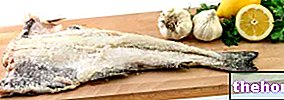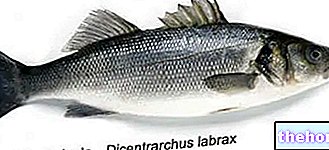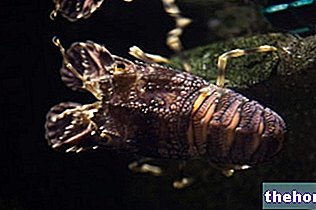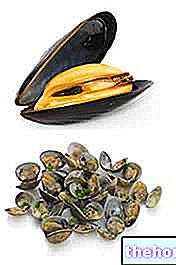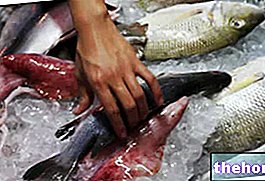Speaking of how to choose, prepare and cook eel you could write a whole book (to tell the truth, someone has already done so).

Choice of Anguilla
The variables to consider are:
- Origin: sea, brackish water from the valley, fresh water from lake or river, fresh water from fish farming. The best are ALWAYS those of the sea; followed by those of the lake or stony river, and then reach those of breeding in the valley (taking care NOT to buy them in the summer - in which we often witness the dying of molluscs which the eels eat, acquiring a bad taste - and possibly inquiring about the valley of origin); I do not recommend those of intensive breeding in fresh water. The sea eel feeds mainly on shrimps, crabs and small fish, as well as the river eel; this has a positive effect on both the flavor and the nutritional composition of the eel. On the contrary, those raised in intensive fish farming are fed on pellets of animal meal.
- State of conservation: The eel should be bought alive to be cleaned or cleaned sitting by the fishmonger. A NOT clean dead eel keeps very little; the meats do not spoil quickly but the ferment of the digestive mixture takes place and, in the cleaning process, if unfortunately it were cut or damaged, it would release a very unpleasant odor that could take root (albeit slightly) to the meat. Better a "clean eel immediately and frozen of an "eel never frozen but dead for 2-3 days and refrigerated.
- Size of the eel: if you prefer, the most ductile eel is the medium-sized one, about 500-700g. A "small eel, in addition to providing too much waste compared to the edible part, absolutely does not deserve to be taken. On the contrary, a" large eel (1-2kg), as well as being fatter, requires a dexterity of cooking worthy of an expert.
How to clean the eel
It is almost useless to write it, you should see it and try it!
Watch the video
- Watch the video on youtube
To learn how to "sciapare" the eel, a great deal of dexterity is required. The tools are quite unique and have little to do with the classic cutting board and knife. These are: wooden plank (nicely called "sciapadora"), 2 awls ( with which you fix the eel - one on the mouth or on the head and the other on the tail) and a cutter (to cut the eel accurately the blade must be as sharp as a scalpel). The eel opens from the BACK and NOT from the BELLY. Summarizing the process:
- Clean the eel from external mucus (with absorbent paper or a cloth)
- On the axis, point the eel's tail up with one of the awls; NB. The back of the fish must be facing the dominant hand of the operator
- With the other awl, fix the mouth / head of the eel taking care that the body is in TENSION
- Using the utility knife, cut the meat lengthwise near the tail awl (top) without severing the spine
- From there, make a 4-5mm deep surgical incision (just under the skin) along the back, ending on the eel's skull.
- Starting from the tail, on the line of the superficial cut just made, cut deeply by swiping the blade against the spine up to the head. NB. Arriving at the abdominal cavity, cutting off the tiny spines of the rib cage, take care NOT to puncture the viscera; piercing the gallbladder, the meat would take on a greenish color
- Now, with the cutter, cut for 1-2mm the tiny spines that start from the spine starting at the top of the tail and swiping the spine sideways, both above and below it.
- Still from the tail, pierce the cutter BEHIND the backbone and scrape it back up to the head; now, the spine should be attached to the flesh ONLY on the tail and head
- Eliminate the vertebral column by cutting it near the tail and head; to it, in the removal, a good part of the viscera should remain attached; therefore also discard the remaining ones from the belly
- Finally, extract our "scarf" from the board (so called for the typical flat shape).
ATTENTION! Some appreciate that the "eel, even if" sciapata ", retains the backbone attached to the meat. This variant does not significantly compromise the cooking of FROZEN fish (in the larger specimens it extends it a little) even if, in the fresh one, it causes a" animal curling on itself which sometimes makes cooking on the grill rather difficult.
How to cook eel
It is almost useless to write it, you should see it and try it!
Watch the video
- Watch the video on youtube
The eel can be packaged in an OPTIMAL way: grilled (exclusively grilled and, at most, with a gas grill ... absolutely NOT with an electric grill), stewed (or in any case in the sauce for first courses) and fried. I will not go into this last method as it requires the use of young specimens which, as we have already said, do not deserve to be taken. As for the stewed eel, I suggest you consult the Neapolitan recipe of the capitone di natale even if, personally, I do not appreciate the taste (excessively fat) as it creates considerable digestive difficulties. "eel remains the grilled one.
For grilled cooking it is always good to remember to use a heat source with intensity suitable for the size (and therefore the thickness) of the fish; the larger the "eel, the less intense the fire must be, extending cooking even beyond 20-30". The adult eel has up to 1/3 of its weight in fat, even if through the heat treatment it ends up losing a very high percentage of it. Kind readers are under no illusion, the eel is still a very caloric fish, but its digestibility and the nutritional content can be very different according to the manual skills of the "grill". If we want to be meticulous, the optimal wood embers for the eel are obtained from vine wood or, in general, from untreated fruit trees.
Tradition has it that the cooking eel is turned only 2 times ... but it is not always possible to do so (especially for newbies); what is more important, however, is the side on which you START to cook the fish, that is ALWAYS that of the skin. The eel will then be turned when the meat lightens and begins to exude large quantities of water and fat, taking care to verify that the side of the skin being cooked has acquired a very intense color but not "black" -burnt". Once turned, pay attention: the fat of the eel ignites easily and it is not uncommon for the flames to superficially burn the meat. Then proceed with cooking on the side of the meat until it acquires a more or less intense browning: the thicker it is. animal, the more the surface of the meat will be subjected to the Maillard reaction. Turn the fish one last time to finish cooking the meat and dry the skin; when a certain "stiffness" of the "scarf" is perceptible (due to the dehydration of the eel, the drainage of the fat, the drying of the skin and the of a crispy crust on the meat) cooking will be completed. ATTENTION! While it is true that "carefully cooked grilled sea eel is an almost priceless delicacy, it is equally true that the same fish undercooked or singed is torture for the palate; a" undercooked eel is easily recognized by the turgid and rubbery consistency, as well as the clearly visible layer of fat, of the meat placed under the skin. On the contrary, in "textbook" cooked fish the fat is completely dissolved (except for fish that exceed 1.0-1.5 kg in weight) and the fork sinks well into the meat which takes on a crunchy consistency on the surface and soft at the heart.
Fish, Molluscs, Crustaceans Anchovies or Anchovies Garfish Alaccia Eel Lobster Herring Lobster Whitebait Bottarga Sea bass (Sea bass) Squid Canocchie Scallops Canestrelli (Sea scallops) Capitone Caviar Mullet Monkfish (Monkfish) Mussels Crustaceans Dates Sea Fruits Fish Flour Fauna Fish stock Prawns Crabs Spider crab (Granceola) Halibut Sea salad Lanzardo Leccia Sea snails Prawns Cod Molluscs Octopus Hake Ombrina Oysters Sea bream Bonito Pangasius Paranza Anchovy paste Fresh seasonal fish Blue fish Puffer fish Swordfish Plaice Octopus (Octopus) Hedgehog of Sea Amberjack Salmon Sardines Sardines Scampi Cuttlefish Mackerel Sole Stockfish Surimi Sushi Telline Tuna Canned tuna Mullet Trout Fish roe Bluefish Clams OTHER FISH ARTICLES Categories Alcoholic Food Meat Cereals and derivatives Sweeteners Sweets Offal Fruit Dried fruit Milk and derivatives Legumes Oils and fats Fish andpeach products Salami Spices Vegetables Health recipes Appetizers Bread, Pizza and Brioche First courses Second courses Vegetables and Salads Sweets and Desserts Ice creams and sorbets Syrups, liqueurs and grappa Basic preparations ---- In the kitchen with leftovers Carnival recipes Christmas Light diet recipes Women's, mom's and dad's day recipes Functional recipes International recipes Easter recipes Celiac recipes Diabetic recipes Holiday recipes Valentine's Day recipes Vegetarian recipes Protein recipes Regional recipes Vegan recipes

